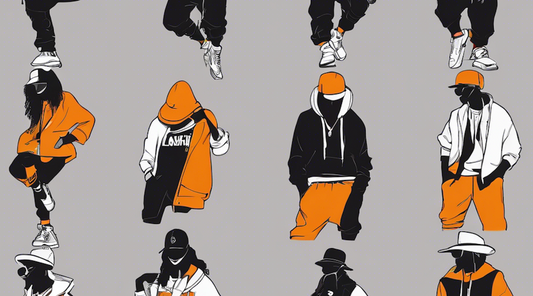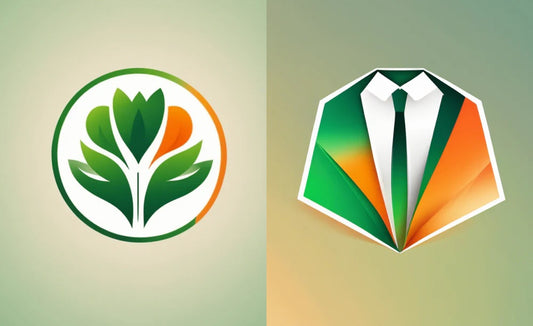Introduction
Hello. It's Nagashima from the CG Team.
Inspired by the article on moncler-genius-ai-campaign (where Moncler Genius used AI-generated images for their campaign), I've compiled a discussion we had internally among three of our team members about GAI (General Artificial Intelligence). In this discussion, we approach GAI from three perspectives: Production (Muto), Operations (Kamijo), and General (Nagashima).
Experiencing the Democratization of Design
Nagashima: I saw the AI-generated images from moncler-genius, and was impressed with how well AI could replicate Moncler's brand image. I wonder if it’s because it’s down products that it’s easy to replicate.
Muto: When we use Midjourney for image generation, we often see down products, right? It might be a combination of the AI's training data and Midjourney's characteristics that make it compatible. If they used the brand name "moncler" as an actual prompt to generate images, that's impressive.
Nagashima: True. For a renowned brand like Moncler, the AI might already recognize the brand itself.
Anything else you noticed, Muto?
Muto: It was intriguing to see that the quality between images generated by designers or creators and those by our team or the general public was almost identical.
Nagashima: I felt the same! Maybe it's because we're all using Midjourney to generate these images. The main skill required is how well you can imagine and provide appropriate prompts while considering the AI, which means there's a low entry barrier for creating images. I think that’s one of the strengths of GAI.
Muto: It truly feels like the "democratization of design" that President Ueda of Omnus mentioned is coming into fruition. Now, even the general public can create fashion. It's like a validation of that idea.
Perception of Information Quantity in GAI-Generated Images
Nagashima: You mentioned once that GAI-generated images contain a lot of information. Can you elaborate on that?
Muto: Traditional design sketches can sometimes be abstract or lack information. But AI-generated images are the opposite; they often have an abundance of details. This makes one ponder what elements to keep or discard when turning these designs into reality. I sometimes felt compelled to represent every detail the AI produced.
Kamijo: In what context did you feel this way?
Muto: I felt it when I first transformed a Midjourney-generated design into 3D modeling. After finishing, I kept wondering if it was the right approach. Only in hindsight did I realize that my output was packed with information.
At that time, I wanted to replicate even the gritty, detailed parts of the AI as much as possible. On the other hand, I was also conscious of making it into a real piece of clothing and proceeded with the production accordingly. Using CG to the fullest, I tried to faithfully reproduce the image from Midjourney, and as a result, I ended up with a creation that was packed with various pieces of information.
So far, I've been incorporating all the information and adjusting it with thoughts like "let's do it this way or that way." But now, I think it might be important to start with a mindset of omitting some things from the beginning. GAI-generated images contain various elements, so if you don't carefully scrutinize them when you receive them, you might lose direction in the production process due to information overload. That's a challenging aspect, I feel.
Kamijo: From a practical standpoint, designers focus on the garment's look and coordinating outfits, approaching design visually and creatively. Pattern-makers focus on ergonomics, considering human anatomy and comfort. But current GAI images are purely visual. They don't consider ergonomics. Maybe as technology advances, we'll overcome this limitation, but it seems far off.
Nagashima: How would you perceive the richness of GAI-generated images from a planning or operational perspective?
Kamijo: When communicating during the planning phase, we usually piece together fragmented information in our heads, requiring abstract thinking and a shared understanding. With GAI, you can get a unified visual representation, simplifying consensus-building. That’s a definite advantage.
Differences in Reality Line: Acceptable in Entertainment but Not in Real-Life Scenarios
Nagashima: Do you think image-generation AIs will evolve to produce videos in the future? I'm excited about the idea of the general public using platforms like Midjourney to generate videos as they currently do with images. It seems we could even make promotional videos.
Muto: I was casually watching an idol's individual PV on YouTube during lunch, and suddenly a co-performer turned into a different character. I thought, "This has to be AI," and sure enough, it was titled "Idol Name × AI". AI was heavily used to replace and transform characters. It made me realize how pervasive AI has become.
Kamijo: Recently, this genre is becoming more common, isn’t it? I saw an article where a gravure idol trained her image into an AI, then created a photo book using AI-generated images. Everyone's focused on the fact that "AI can produce human images," and such angles are prevalent. In other words, rather than the clothes they're wearing, I think the emphasis is on creating "the idol herself" as a form of comprehensive entertainment.
In the end, fashion is also comprehensive entertainment. Discussions often arise that both the model and the clothes should be cute. However, when we focus on thoughts like "the clothes this person is wearing seem odd," the resolution of such attention feels different from the broader entertainment approach we were discussing. When you view it as comprehensive entertainment, both the person and the clothes don’t need to be perfect. There are elements that can be acceptable when taken from the broader perspective, but when you focus solely on "clothing," you prioritize its completeness and appeal, which brings its challenges. Even though both deal with fashion, the line of required information’s realism varies.
People often say that when looking at images generated by GAI or created with 3DCG, "It might be usable for promotion or something." In the fashion business, the entertainment aspect is primarily for promotion. If it's high on entertainment, it can be accepted and easily practiced. On the other hand, in fields closer to the actual manufacturing, like patterning and sewing, realism is paramount. AI's approximations are hard to accept, and if something isn't there, you have to add it or remove unnecessary elements, which adds extra work. The ease of use and implementation has shades, depending on how much realism is required.
Muto: Recently, there's a lot of back and forth between places with strong entertainment elements and those with weaker ones.
Diverse perspectives and different approaches
Nagashima: If tools like Midjourney existed during our student days, I think they would have been incredibly useful. What do you think, Muto?
Muto: I also attended a fashion college, so I feel the atmosphere would be somewhat similar. In the design creation process, the act of designing and bringing it to form remains consistent. I’m not sure about the current processes in modern schools, but back in my day, starting a design was about "creating a research book."
You decide on a concept, gather images from platforms like Pinterest, visualize them, and then decide how to adapt them into clothing. This process, from research to design, is what I think GAI might cover. Students, like I was, are attracted to creating something "with impact, conceptual, and never seen before." There's the fun and thrill in generating something you couldn't conceive on your own with GAI.
Nagashima: The question "where can it be utilized" is always on our minds, right? Do you feel there are any "barriers" to using GAI?
Muto: While there's excitement and fun in creation, I believe many would face challenges when trying to turn these ideas into real clothing. Objectively, I don't think people would wear or buy the avant-garde styles or the fantastical worlds Midjourney images depict. While students have the freedom to create within the school, it's different in the real world.
The way major apparel brands use tools like Midjourney is entirely different. It's remarkable that, even though professionals in clothing design might adjust the design, they can make wearable clothes starting from images generated by Midjourney. Our CG team often uses GAI to create models for Zepeto, so that’s intriguing.
If you're a student, you can utilize it freely based on your theme. For our CG team, we have ways to utilize it aligned with the concept of the brand "accelerando.Ai."
Nagashima: Depending on the user's position with GAI, there are differences in perspectives on its use. It's unrealistic to expect Midjourney to output everything perfectly. And if you're clear about your goal, there are many things that can be done with tools other than Midjourney, like Photoshop.
Kamijo: "Understanding the entire process and seeing how it changes when utilizing GAI" is something people still can't visualize. Neither do we have people who fully grasp the entire process, nor those who can imagine what it'd be like when replaced by GAI. That's the current situation.
Nagashima: Let’s hope that as the environment further matures, the range of its application will expand!
To close
Today, we discussed image generation with GAI and perspectives on its use.
We never ran out of topics, like "interest in new materials created by GAI," "curiosity about how craftsmanship will change with GAI," or "wanting to try GAI video generation tools."
I hope to write again if there’s another opportunity!


![[Easy on Your Smartphone] How to Create ZEPETO Items with Maison AI](http://open-fashion.com/cdn/shop/articles/387ac76082623e94218de7c076a87675.jpg?v=1712232721&width=533)

